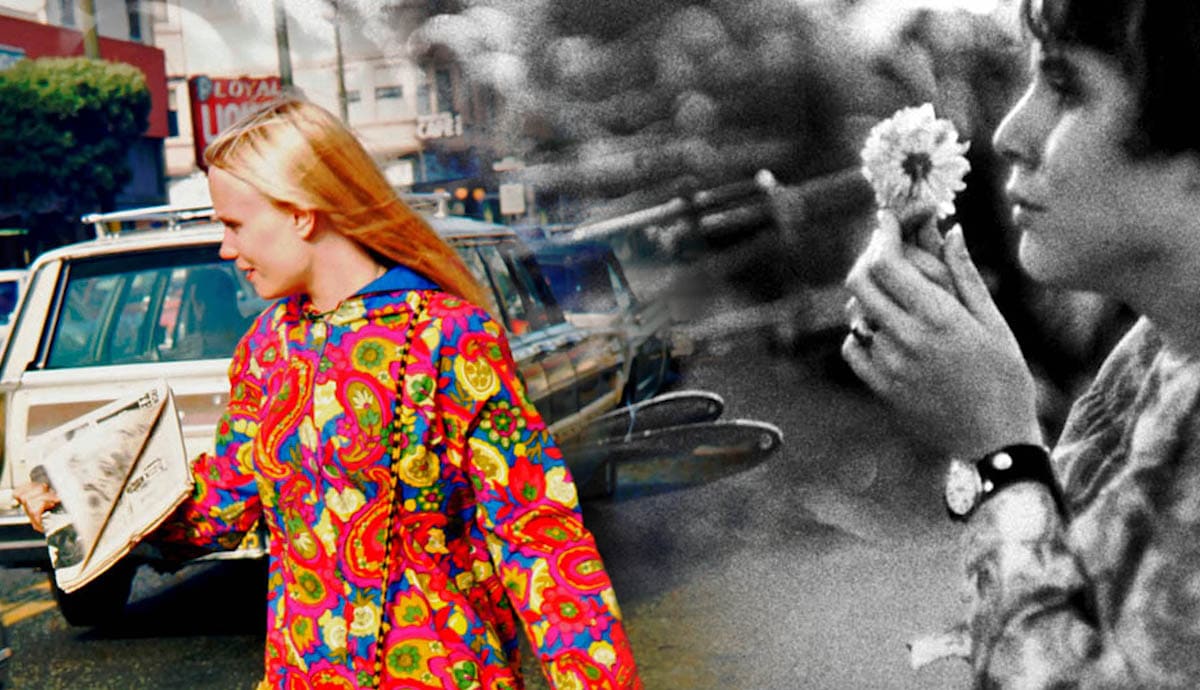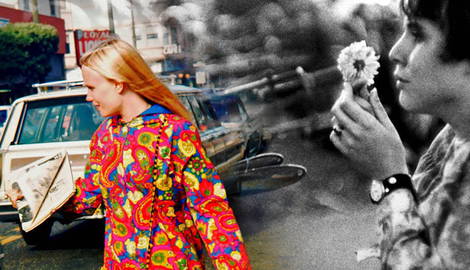
In the United States, psilocybin mushrooms, or more commonly known as “magic mushrooms,” are federally classified as a Schedule I controlled substance under the 1970 Controlled Substances Act. This means that it has “no accepted medical use and a high potential for abuse.” But it has not always been this way. In 1950s and early 1960s America it was being seriously considered by top medical researchers for its therapeutic properties. Research into its positive uses was burgeoning at Harvard University during the early 1960s. In the last few years, that research has only just begun to be studied again as a potential cure for mental illness and other existential anxieties.
Origins In 1960s America

Although magic mushrooms have a history going back to prehistoric times, their first known impact on the United States began only in 1955, when Valentina Pavlovna Wasson and her husband, the banker R. Gordon Wasson, actively participated in an indigenous magic mushroom ceremony in the State of Oaxaca in Southern Mexico.
Understandably, the Wasson’s were enthralled by this new experience. After returning home, they spent a great deal of time publicizing their experience, and talking about the effects magic mushrooms have on the body and consciousness. In May 1957, they even published an article on their experiences in Life magazine. This article would prove to be pivotal in introducing the rest of the world to magic mushrooms. Indeed, the phrase “magic mushroom” itself was used first in that article.

Timothy Leary, a Psychology Professor at Harvard and “prophetic shaman,” read the Life magazine article and became highly interested in the experiences that the Wasson’s described. He traveled with fellow psychology professor Richard Alpert (later known as Ram Dass) to Oaxaca, Mexico, where they were enthralled by the revolutionary potential magic mushrooms could have for psychology and psychotherapy.
Magic Mushrooms at Harvard
After their return from Mexico, Leary and Alpert set up the Harvard Psilocybin Project to conduct experiments with magic mushrooms. They were even joined by the British author Aldous Huxley, who wrote a book on another kind of psychedelic substance, mescaline, in The Doors of Perception in 1954.
Controversially, Leary and many other academics at the Harvard Psilocybin Project experimented with magic mushrooms on themselves. This led them to develop a personal connection with the effects magic mushrooms had on the mind and body. From this, they then began to advocate more strongly for the benefits of magic mushrooms and other psychedelics such as LSD and ayahuasca.
However, these opinions on the benefits of psychedelics were not derived from purely personal experience. Being academics, they tested their theories empirically too. For instance, during the Concord Prison Experiment, they gave inmates psilocybin, which is derived from magic mushrooms, to test if using the drug combined with psychotherapy sessions would prevent inmates from reoffending once they were released from prison.

For an experimental drug whose existence was unknown outside of Latin America until a few years prior, the results were promising. It was initially predicted that 64% of the 32 subjects who participated in the study would return to prison within six months of being released. However, after six months, only 25 percent of those on parole had returned, six for technical parole violations and two for new offenses. Indeed, in a 1960 study, 167 subjects participated and by the end, 159 of the subjects declared that the psilocybin experience had “changed their lives for the better.”
Certainly, what the data from these experiments showed is that magic mushrooms and extracted psilocybin could potentially positively impact mental health. It was worth experimenting with further, at least. Harvard eagerly hired Leary in 1959 for his research into magic mushrooms, where it was met with high hopes by the Harvard Center for Research in Personality.
Magic Mushrooms: Escaping the Walls of Academia
What this research began is a more general interest and appreciation for the impact magic mushrooms could have on mental health and the expansion of human consciousness in general. This was made all the easier at the time, considering that only mescaline and peyote were illegal in the United States.

Given this radical potential, it is unsurprising that magic mushrooms attracted attention from writers, artists, and musicians. For instance, Allen Ginsberg, the famous Beat poet of the 1950s and writer of the epic-poem Howl, wrote a letter to Leary in 1960 asking him to participate in his studies with psilocybin at Harvard. Allen would soon after reap the benefits of magic mushrooms and LSD on expanding human consciousness, popularizing the drug among the emerging counterculture of 1960s America.
Indeed, young tourists from the United States began traveling to Oaxaca as early as 1962. This indicates the level of interest magic mushrooms had garnered in American youth culture since the Wasson’s had participated in the ceremony only a few years prior. It is also rumored that many other musical icons of 1960s America visited Oaxaca searching for magic mushrooms, including Bob Dylan and John Lennon. However, these rumors were never substantiated. Certainly, the media was also intrigued by the potential of these new psychedelic drugs, whether they were in favor of or against them.

Nevertheless, what can be substantiated is the interest that these musical icons had in magic mushrooms and other psychedelics in general. It could be argued that these were the greatest agents in popularizing magic mushrooms in 1960s America. For example, since The Beatles’ performance on The Ed Sullivan Show in February 1964, the British band had become the world’s biggest celebrities. Yet it was in 1965 when they first began to use psychedelics in London, speaking of this experience as “gaining hundreds of years of experience in only 12 hours.”
1965 can be considered the year that magic mushrooms fully escaped the walls of academia and entered into the public consciousness. The burgeoning hippie movement had begun to embrace the power of magic mushrooms and other psychedelic drugs, expanding even further by its embrace in popular culture, literature, film, and especially music.
Hippies: A Threat to 1960s America?

However, the hippie movement was considered a threat to the establishment in 1960s America. By taking psychedelic drugs, young people had in a sense developed their own rite of passage into adulthood; something older and more conservative generations could not understand. Not only that, but hippie culture also seemed to spurn everything which made America American – in their eyes.
The hippie movement rejected materialism, traditional fashions, and the classical understandings of “the family.” They did not support the war in Vietnam, supported civil rights, and advocated for the overthrow of society, all while harnessing the power of magic mushrooms and other psychedelics to make it happen. In a nutshell, they were convinced if they could get the president to trip, he’d agree with them. However, not all young people thought this way. In fact, a majority didn’t. But to the American government, this new hippie mindset seemed scarily popular. Enough to warrant retaliation and a clamp-down.

By 1968, the war in Vietnam was at its peak. During that year, the US became scarily close to losing the war during the “Tet Offensive,” and deaths increased exponentially. It was also undergoing a period of intense political and social change. Civil rights were still a prominent issue, and the political turbulence caused by the murder of civil rights figurehead Martin Luther King Junior as well as Bobby Kennedy, the brother of John F. Kennedy and challenger for the White House during that year, turned the pressure up considerably. All of this political instability was further intensified by the counterculture of the hippie movement and magic mushrooms.
Increasingly, to “ordinary” Americans it felt like the country was reaching a point of no return. In 1968, Richard Nixon was thus elected, a Republican promising law and order. Nixon would later go on to call Timothy Leary “the most dangerous man in America.”

Leary had been busy since his early days as a psychology professor at Harvard. In fact, he had been fired from his academic post for taking magic mushrooms along with his students. The Massachusetts Department of Public Health launched an investigation. It was later dropped, but the university eventually fired Leary anyway in 1963, undoubtedly due to the negative attention he had begun to receive as a controversial public figure.
Ever since, Leary began popularizing the use of magic mushrooms and other psychedelics to the American public, especially the youth. In 1967, Leary attended the “Human Be-In,” a gathering of 30,000 hippies in Golden Gate Park in San Francisco. At this event, he coined the phrase that would go on to exemplify the spirit of 1960s American counterculture: “turn on, tune in, drop out.”

By 1968, the American establishment had had enough and the war on drugs began. Psychedelics were used to marginalize and undermine hippies. The establishment did this through a publicity campaign denigrating psychedelics as extremely dangerous: one dose of psychedelics could lead to permanent insanity. However, no dose of any psychedelic has actually ever been shown to be too strong. Although its consumption can be risky under incorrect circumstances and its use is debated, this doesn’t take away its utility as a compound worthy of serious academic research.
The End of Magic Mushrooms

By the early 1970s, psychological and psychotherapy research using magic mushrooms and other psychedelics had stalled completely. It was increasingly difficult to obtain the drugs needed to conduct proper academic studies, especially in the scope they needed to obtain actionable results.
In fact, the drugs were completely written out of academia and deemed a joke by the scientific community. The likes of Leary, hippies, and psychedelic potential had been discredited, and researchers who worked with psychedelics turned into a laughingstock. Most had been forced to seek employment searching for new areas of psychology. Slowly, over the course of just over a decade, magic mushrooms and other psychedelics had been turned from a medicine with the potential ability to cure our most incurable health problems into a poison.
Since 1996, research into the potential of psychedelic medicine began again in the United States. The drug is still criminalized for ordinary consumption. However, research now continues.








